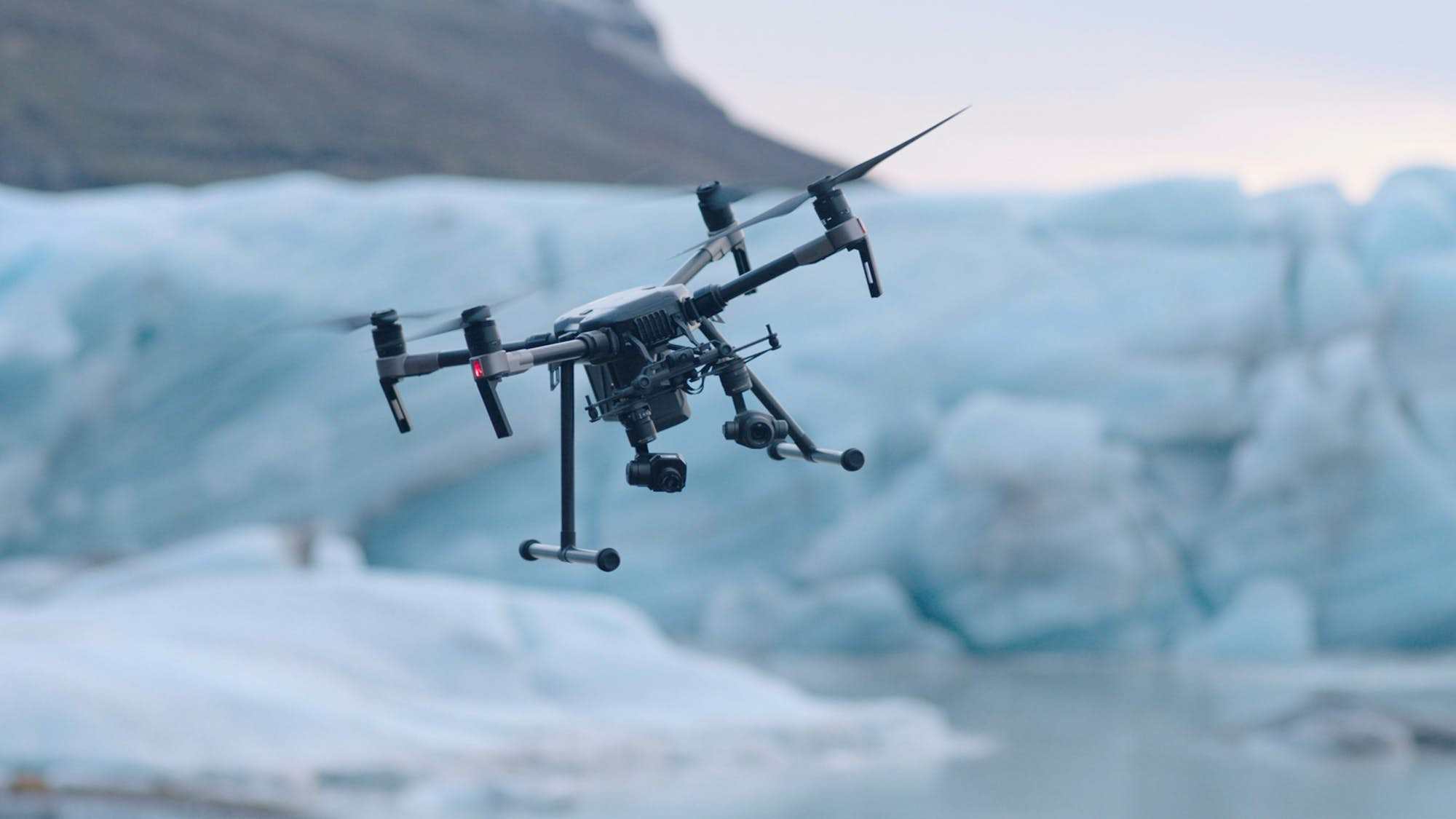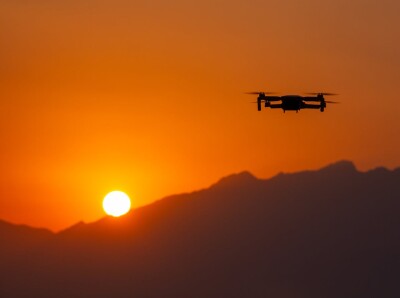Rumors about DJI making a big splash at Mobile World Congress had been swirling the past few weeks, and with the announcement of the M200 series, that talk has been confirmed. Unlike previous major product announcements from the company though, this one is explicitly relevant to commercial drone operators.
The M200 series has been specifically designed for aerial inspection and data collection. Infrastructure and facility inspections along with construction site mapping and public safety applications were the industry applications mentioned for the product, but it’s clear that this drones series will not be limited to a specific set of professionals.The M200 series comes in three versions. The M200 has one downward-facing gimbal mount, the M210 allows multiple payload configurations while the M210 RTK enables centimeter-precision navigation. The folding, weather- and water-resistant body builds upon the innovation we’ve seen with the Inspire series and Mavic, but takes it to another level, and one squarely aimed at professionals.As a testament to the importance of the announcement, analysis around the details have already been explored by various experts. A write-up in Mashable detailed how the M200 is a departure from DJI’s consumer and prosumer drones. Another report in Wired mentioned that the upward-facing camera is a first for DJI, intended to help with things like bridge inspections where the drone has to fly underneath something and look up. Ian Smith provided an overview of the DJI Matrice 200 on his podcast, and he put together a great breakdown of the info that’s been released along with the info that has been presented in the introduction video, which you can watch below.Opinions and insight around what to make of the M200 are not in short supply, and that seemed like an opportunity to gather more info about the approach that went into the creation of this product directly from the source.“We're trying to make the M200 a drone that's designed to be easily adaptable for all sorts of professional work,” DJI Communication Director Adam Lisberg mentioned. “We want professionals of all types and sizes to know that this is an aerial platform that is stable and robust which can be fitted with the sensors you need, but that there is also a strong software ecosystem. Users can come up with an easy and effective workflow to import data into their system and ideally integrate it into any existing software packages. We want to make it as easy as possible for users to put drones to work so they can focus on the business they want to do.”An issue that comes up over and over for commercial drone operators is around the challenges that they deal with when they’re forced to essentially piece together their own hardware and software solutions. That issue is something Paul Guo, Director Enterprise Solutions at DJI, spoke to directly when he mentioned that the M200 series is DJI’s attempt to introduce a holistic solution that is specifically designed for commercial users. Many organizations realize the potential impact drones might be able to have, but those same organizations struggle when it comes implementation of a drone program. DJI is positioning the M200 as the tool that will ease those implementation challenges, and the variety of options for the M200 speaks to that commitment.“If you really only need one sensor, then you'll probably be fine with the M200,” Lisberg explained. “On the other hand, if you can save a lot of time and energy by having two sensors flying at the same time, you'd want to go up to the 210 because it has the innovative dual gimbal. For the RTK system, that's if you need extreme precision, and you need to be able to get centimeter level accuracy while flying. If you need to precisely repeat a particular route, or if you need to exactly generate and hit the same position time and time again, you’ll need the M210 RTK.”A quick example of when and why it would be beneficial to have two sensors flying at the same time is in the property management field. There are many instances where it would be beneficial to utilize a thermal imaging sensor to detect any heat leaks or cool air leaks, in addition to having a camera that can pinpoint any physical anomalies that might be associated with those leaks.Providing users and organizations with these sorts of options opens up incredible opportunities, but being able to be successful with a drone is really about having an understanding around what can and should be done with the information that’s being gathered by a drone. The fact that DJI is just as focused on how users can utilize the data they’re gathering as they are with the hardware goes back to the concept of a holistic solutions that enterprise users can properly leverage, regardless of the details associated with that process.“We’ve been very focused on making the data gathered by the M200 as easy to ingest and integrate into an enterprise ecosystem as possible,” Lisberg said. “We’re working closely with the companies that are going to be writing software based on the SDK to make that process as easy and responsive to a user’s particular needs as possible.”The Matrice 200 drone is set to be available for pre-order in Q2 of this year. No word on pricing yet.
Many organizations realize the potential impact drones might be able to have, but those same organizations struggle when it comes implementation of a drone program. DJI is positioning the M200 as the tool that will ease those implementation challenges, and the variety of options for the M200 speaks to that commitment.“If you really only need one sensor, then you'll probably be fine with the M200,” Lisberg explained. “On the other hand, if you can save a lot of time and energy by having two sensors flying at the same time, you'd want to go up to the 210 because it has the innovative dual gimbal. For the RTK system, that's if you need extreme precision, and you need to be able to get centimeter level accuracy while flying. If you need to precisely repeat a particular route, or if you need to exactly generate and hit the same position time and time again, you’ll need the M210 RTK.”A quick example of when and why it would be beneficial to have two sensors flying at the same time is in the property management field. There are many instances where it would be beneficial to utilize a thermal imaging sensor to detect any heat leaks or cool air leaks, in addition to having a camera that can pinpoint any physical anomalies that might be associated with those leaks.Providing users and organizations with these sorts of options opens up incredible opportunities, but being able to be successful with a drone is really about having an understanding around what can and should be done with the information that’s being gathered by a drone. The fact that DJI is just as focused on how users can utilize the data they’re gathering as they are with the hardware goes back to the concept of a holistic solutions that enterprise users can properly leverage, regardless of the details associated with that process.“We’ve been very focused on making the data gathered by the M200 as easy to ingest and integrate into an enterprise ecosystem as possible,” Lisberg said. “We’re working closely with the companies that are going to be writing software based on the SDK to make that process as easy and responsive to a user’s particular needs as possible.”The Matrice 200 drone is set to be available for pre-order in Q2 of this year. No word on pricing yet. 




.jpeg.small.400x400.jpg)










Comments